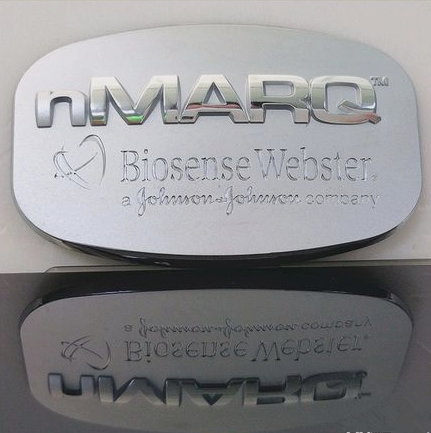The principle of electroforming:
Electroforming is a process in which a certain thickness of metal is electrodeposited on a core mold or a sample by the principle of electrolysis, and then the two are separated to manufacture a mold cavity. The precision and finish of the electroforming mold cavity are exactly the same as those of the core mold. Electroforming is also known as the "cloning" technique of non-living matter.
Features of electroformed signs:
1. Complex diversity of surface treatment effects:
On the same surface, it can be processed into a composite effect such as twill, horizontal, matte, mirror, and three-dimensional (protrusion); in comparison, stamping can only be processed into a required external dimension, or a limited three-dimensional effect, but for surface texture. Unachievable; if the product design involves more complex surface effects, the electroforming process is generally used.
2, good wear resistance:
The surface of electroformed signs is generally chrome-plated. The hardness of chromium is extremely high, reaching HV780~910, while the hardness of stainless steel is generally HV180~650; so the surface of many superhard tools is chrome-plated to enhance the hardness and wear resistance of the tool. Sex; the product does not change in appearance under normal use;
3. Stable chemical properties:
Whether it is the substrate of the sign or the surface coating, it has extremely stable chemical properties, even in extremely humid environments, there is no need to worry about rust; the chemical nature of chromium is not active, and it is stable to oxygen and water vapor at normal temperature. Chromium begins to react with oxygen at temperatures above 600 ° C, but when the surface forms an oxide film, the reaction is slow;
4, high polishing:
Nickel is a highly polished metal that is an excellent substrate for chrome plating. Electroformed nickel is chrome-plated after polishing to achieve a mirror finish that is as perfect as a stainless steel mirror.
Electroforming is a process in which a certain thickness of metal is electrodeposited on a core mold or a sample by the principle of electrolysis, and then the two are separated to manufacture a mold cavity. The precision and finish of the electroforming mold cavity are exactly the same as those of the core mold. Electroforming is also known as the "cloning" technique of non-living matter.
Features of electroformed signs:
1. Complex diversity of surface treatment effects:
On the same surface, it can be processed into a composite effect such as twill, horizontal, matte, mirror, and three-dimensional (protrusion); in comparison, stamping can only be processed into a required external dimension, or a limited three-dimensional effect, but for surface texture. Unachievable; if the product design involves more complex surface effects, the electroforming process is generally used.
2, good wear resistance:
The surface of electroformed signs is generally chrome-plated. The hardness of chromium is extremely high, reaching HV780~910, while the hardness of stainless steel is generally HV180~650; so the surface of many superhard tools is chrome-plated to enhance the hardness and wear resistance of the tool. Sex; the product does not change in appearance under normal use;
3. Stable chemical properties:
Whether it is the substrate of the sign or the surface coating, it has extremely stable chemical properties, even in extremely humid environments, there is no need to worry about rust; the chemical nature of chromium is not active, and it is stable to oxygen and water vapor at normal temperature. Chromium begins to react with oxygen at temperatures above 600 ° C, but when the surface forms an oxide film, the reaction is slow;
4, high polishing:
Nickel is a highly polished metal that is an excellent substrate for chrome plating. Electroformed nickel is chrome-plated after polishing to achieve a mirror finish that is as perfect as a stainless steel mirror.




